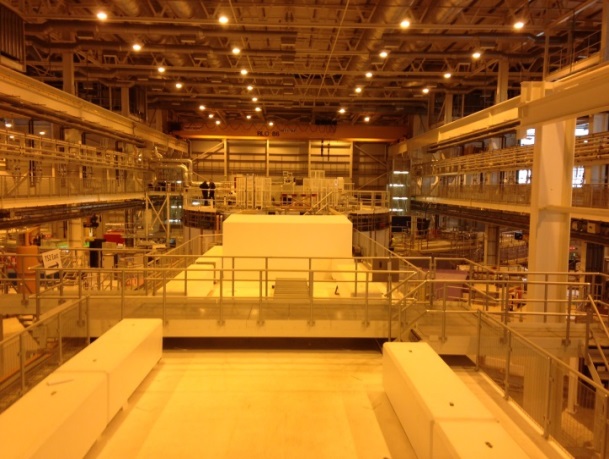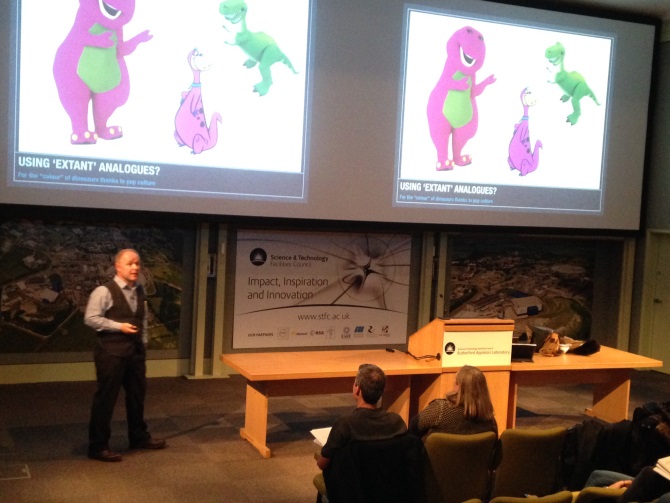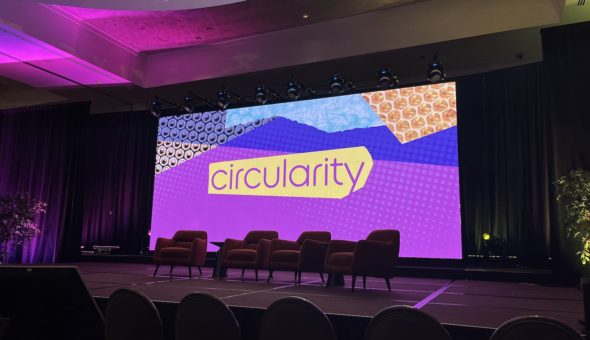100 CDT students from a broad variety of disciplines and from across the country descended upon the Rutherford Appleton Laboratory (RAL) in Oxfordshire, run by the Science and Technology Facilities Council (STFC) and home to over 1000 scientists and many of the UK’s leading scientific facilities. Our students embarked on this highly enjoyable residential course, to learn about the science that happens at Diamond Light Source and the ISIS Neutron and Muon Source and how we would be able to benefit from the facilities. This post was contributed by Oliver Hammond, Naomi Elstone and Jamie Courtenay.

“One of these statements is a lie: (1) Diamond is a time machine. (2) Diamond is an alien spaceship that lands once a week. Well, it’s not a spaceship… As the electron beam is accelerated to 99.99% of the speed of light; fast enough to circumnavigate the Earth 7.5 times per second, time becomes squashed for the electrons due to special relativity. So, each electron spends just 14 seconds in the synchrotron, but in this time we have lived through a full 24 hours.”

On the first day we had a relaxed welcome, with introductory lectures and the opportunity to tour the RAL campus. We were taken first around ISIS and then Diamond by the beamline scientists, and it was great to be able to appreciate the sheer scale of these facilities whilst being told about the science that is done on the various beamlines. To control the proton beam at ISIS, they need to ‘bend’ it with a powerful magnetic field. Large quadrupole magnetics are placed around the synchrotron to keep the beam in check. These magnets put your standard horseshoe magnets to shame! They are over a metre in height and are constantly cooled with water as they get so hot.

As we walked around the doughnut shaped building we had the opportunity to see all 22 of the different beamlines that Diamond has. Beamlines are set up to carry out a smorgasbord of experiments from Small-angle X-Ray Scattering to Molecular Spectroscopy and Protein Crystallography.
The synchrotron is therefore in demand from a plethora of fields, from Chemists and Physicists to palaeontologists trying to find the colour of dinosaurs.
The formal lectures covered the techniques offered at RAL; Imaging & Tomography, Small Angle Scattering, Molecular & Electronic spectroscopy, single crystal & powder diffraction, surface films & multilayers, lasers and muons. Scientists from RAL and guest speakers lectured us on their areas of interest to provide an engaging range of lectures. After the talks, students were able to discuss their work with beamline scientists to see if ISIS and Diamond could offer any opportunities for experiments. We were then split into groups to try our hand at hands on workshops where we analysed and interpreted real data, for example in the muons workshop we analysed the cosmic rays that were hitting us in real-time.
In the evenings we were treated to a series of engaging informal lectures. On Monday, Professor Colin Pulham, STFC Public Engagement Fellow, gave a memorable talk on ‘Materials Under Extreme Conditions,’ complete with explosive demonstrations and advice on public engagement techniques. On Tuesday evening Dr Alison Davenport lectured on corrosion science and how it affects nuclear waste disposal and aeroplanes. Dr Martin Owen Jones then gave us a passionate insight into his love of hydrogen as the saviour of the modern world, and the role of ISIS in pioneering this technology. To round off the week in style, our final talk was from the brilliant Professor Phil Manning from Manchester University, who is interested in using the synchrotron light to uncover secrets about dinosaurs.
This course was extremely educational and we had a wonderful experience meeting people from other CDTs.
Respond



